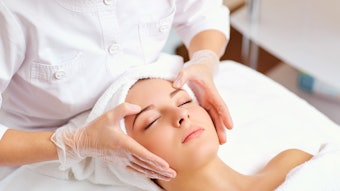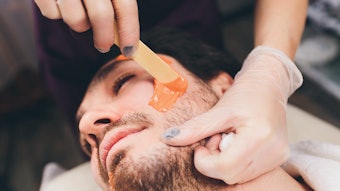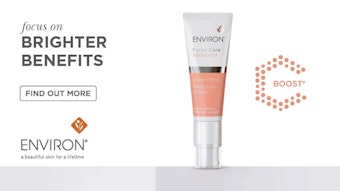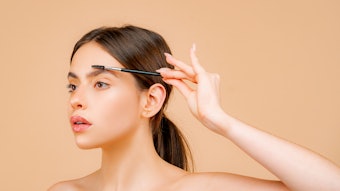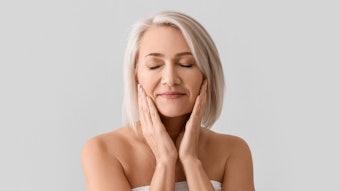
The U.S. Census Bureau predicts the Asian-American population will total 40 million people by 2050. While as a whole this group is characterized by very dark hair and dark eyes, there is much diversity in Asian skin tones—from very light, pale skin to light or dark brown skin. One common thread is the pigmentation issues that Asian Americans often face as after-effects of other dermatologic problems that can be as troublesome as the original condition itself.
At the American Academy of Dermatology’s Summer Academy Meeting 2010 in Chicago, dermatologist Roopal V. Kundu, MD, FAAD, assistant professor and director of the Center for Ethnic Skin in the department of dermatology at Northwestern University Feinberg School of Medicine in Chicago, discussed two of the most common skin conditions in Asians and how treatment also involves addressing the ensuing pigmentation problems.
“The standards of beauty for Asian skin differ by region, but smooth skin and a flawless complexion are highly desired for most Asians,” said Kundu. “That is why treating the initial concern as well as any pigmentation problems that may occur as the result of the treatment are so important.”
Clearing acne step by step
Acne is one of the most common skin conditions that affects Asians, and Kundu explained this population tends to experience inflammatory acne. By its very nature, Asian skin has an increased amount of melanin, and the cells that make melanin tend to be more sensitive to any type of inflammation or injury. Because Asian skin becomes more inflamed with deeper acne pustules and papules, patients are often left with post-inflammatory hyperpigmentation (PIH), which refers to increased pigmentation or dark spots at the sites of inflammation.
“In my practice, Asian acne patients often are much more concerned with the after-effects of acne and how their skin may be affected by the resulting discoloration or scarring rather than the acne itself,” said Kundu. “However, the first goal of any successful treatment regimen is to control the acne with topical and/or systemic medications depending on the severity of the acne.”
In conjunction with medications she prescribes to clear acne, Kundu also recommends medications or over-the-counter products to even out the tone of Asian skin, which can help reduce the incidence of PIH. One such product that Kundu finds very effective in protecting Asian skin from uneven skin tone is sunscreen.
“Many of my Asian patients do not realize how important regular sun protection is to prevent the signs of aging skin, including preserving skin tone and helping minimize pigmentation problems from acne,” said Kundu. “Minimizing intense sun exposure, wearing sun protective clothing and wide-brimmed hats, along with applying a broad-spectrum sunscreen with an SPF 30 is a must for treating Asian skin for this reason.”
Another important component of treating acne in this population is exfoliation. Kundu often recommends glycolic acid, salicylic acid or topical retinoids to her patients to remove the surface skin cells and improve both acne and hyperpigmentation. Once acne is under control, the second goal is to address the resulting pigmentation problems. Kundu typically recommends bleaching agents, such as hydroquinone, as well as chemical peels and cosmeceuticals. However, she cautioned that patients should be careful about where they purchase bleaching creams. Some establishments have been cited for selling products that contain too high levels of hydroquinone and even tested positive for toxic levels of mercury.
“It is very important for all patients to talk to their dermatologist before trying any at-home treatments designed to improve their skin tone, as some products can do more harm than good,” advised Kundu. “Your dermatologist can recommend proven therapies and preventive care to keep your skin healthy and looking its best, even when you are experiencing a skin condition like acne.”
Unmasking the mystery of melasma
Another common skin condition in Asians that can impact the appearance of the skin is melasma. Often referred to as the “mask of pregnancy,” melasma is characterized by brown patches commonly on the cheeks, upper lip, nose and forehead. While the exact cause of melasma is unknown, it is thought to result from a combination of genetic and hormonal factors, as well as UV exposure. Kundu reported that melasma is more common in women and in Hispanics and Asians.
Treatments for melasma include similar therapies used to treat pigmentation problems resulting from acne, such as bleaching agents, hydroquinone, topical retinoids and chemical peels. In addition, certain laser and light therapies have been shown to be safe and effective in Asians.
Kundu reported that fractionated lasers and intense-pulsed light (IPL) therapies can be performed safely in Asians, but cautioned that these procedures need to be administered carefully by dermatologists.
“In some cases, laser and light procedures can worsen melasma if they destroy pigment cells, which leave white spots in the treated areas,” said Kundu. “But they can be safe and effective in treating melasma, so patients need to discuss these procedures with their dermatologist to make sure they are good candidates first.”
As is recommended in treating acne in Asian patients, Kundu added that avoiding the sun and using sunscreen daily are essential in the treatment of melasma and also in limiting potential side effects of laser and light treatments.
Cultural practices can spell trouble for the skin
Many of the deep-rooted cultural practices in Asian populations are still evident today, and Kundu noted that some can pose skin problems that need to be addressed by a dermatologist.
For example, cupping and moxibustion are two ancient healing techniques that complement acupuncture therapy by the use of heat to stimulate circulation. However, Kundu reported that people who regularly practice cupping and moxibustion can get bruising or scarring that sometimes require dermatologic care to minimize PIH. Similarly, the practice of coin rubbing, which involves using oils on the skin and repetitive rubbing of coins firmly over the area to promote healing, can create deep abrasions and bruising that may need medical attention.
Another common cultural practice among certain Asian cultures is the application of black henna tattoos. These popular tattoos could contain high concentrations of a chemical known as para-phenylenediamine, or PPD, used to create longer-lasting black henna tattoos. However, Kundu explained that PPD is an allergen that could cause allergic contact dermatitis, with symptoms ranging from mild eczema to blistering and scarring.
“While people of Asian descent may be more prone to pigmentation problems resulting from dermatologic conditions or from cultural practices, there are many ways that dermatologists can help patients maintain good skin health and minimize potential skin problems,” said Kundu.
